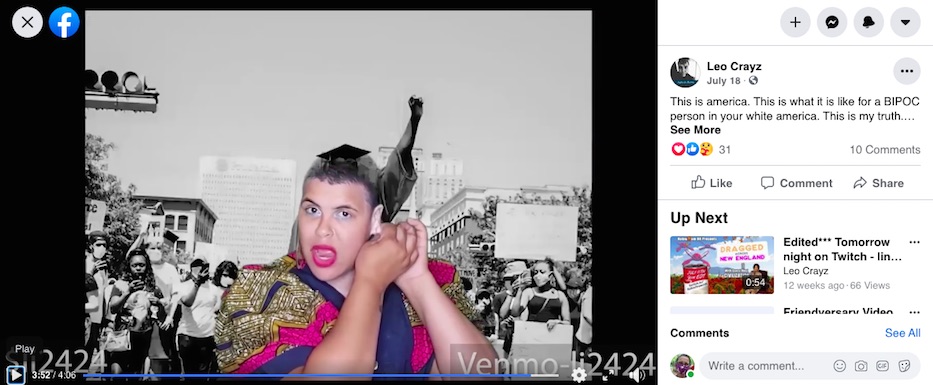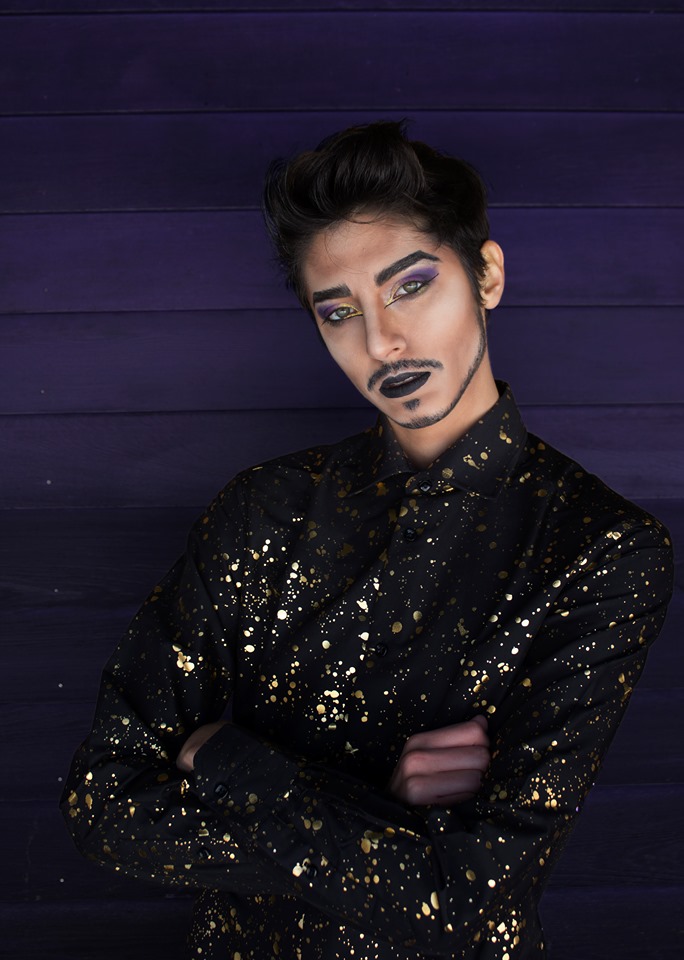
Drag | LGBTQ | Arts & Culture | New Haven Pride Center | COVID-19
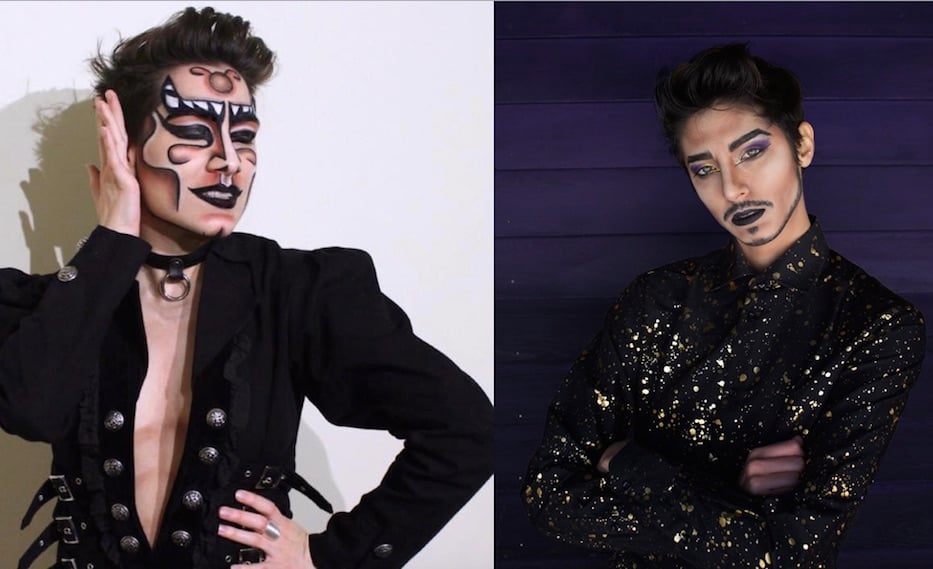
| Ram Shackle and Ray Decorazón. Photos courtesy of the New Haven Pride Center. |
This piece is part of our ongoing collaboration with Centerline, the publication of the New Haven Pride Center. Each month, at least one of our articles appears in both places. To read the most recent issue of Centerline, click here.
Sometimes it’s as simple as the first notes of “Purple Rain,” and the essence of Prince himself is whooshing out onto the stage. Sometimes Robbie Rotten steps out from behind the curtain, taking the audience back to LazyTown circa 2000. Sometimes Steve Urkel is in the house, until Genuine blasts through the speakers, and the suspenders start coming off.
The routines all come from drag kings, mostly female-identifying and non-binary drag artists who are turning male stereotypes on their head. In Connecticut and Massachusetts, drag kings make up a small but growing number of performers, changing how the medium and artistry is understood. In addition to performing, many are using their presence and their routines to address internalized misogyny that they see within drag, often directed at AFAB (assigned female at birth) performers.
Their origin stories, often riddled with misunderstanding from judges and sometimes audience members, show the kaleidoscopic nature of the medium itself. For the last six months, many of them have been navigating virtual performance, social distancing, and a drag landscape that changed overnight due to COVID-19. Here are just a few of their stories.
Frankie Cyanide, 27, was raised in Long Island and Putnam County, New York. His parents were 1970s New York punks who became professional clowns, the inheritance of which now seems baked into his work as a performer. He was “always that weird kid” as a teenager, including a stint as headmaster of three Harry Potter role playing forums when he was in middle school.
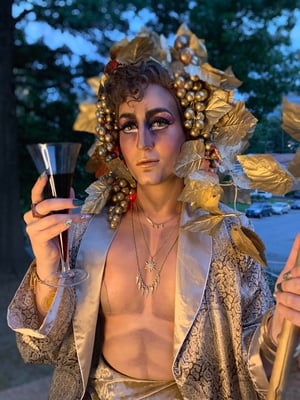
It was during those years—years that also brought his first and only detention for doing GLSEN's annual Day Of Silence in eighth grade—that he began playing with makeup. Initially, the image that he held onto was Frank-N-Furter, the self-proclaimed “Sweet Transvestite” from the 1975 cult classic Rocky Horror Picture Show. After showing up at school dressed as a male-bodied person for Halloween, he kept going.
At 17, Cyanide cut his hair short, then later trimmed the sides with clippers. He started watching RuPaul’s Drag Race when it came out in 2009, after catching an early episode. A few years later, he attended the first DragCon in New York City in a prom dress. Then he discovered Norwalk’s Troupe429, while going out with a friend.
After watching drag at the bar, he asked queens Hazel Berry and Robin Fiercè if he could perform. By his own description, “it kind of snowballed from there:” His role models were often the villains straight from young adult films with big life lessons: Peter Pan’s Captain Hook, Spy Kids’ Floop, and Robbie Rotten among others.
“I really like being able to play with gender and get hit on by gay guys at the bar,” he said. “I’m going to play with makeup, I’m going to create this person in the mirror. I feel like I myself live in this amorphous blob of gender, which leans towards 70s glam.”
When he isn’t doing drag, he works in tech support at a private school in Stamford and represents Stamford’s 12th district on the Board of Representatives.
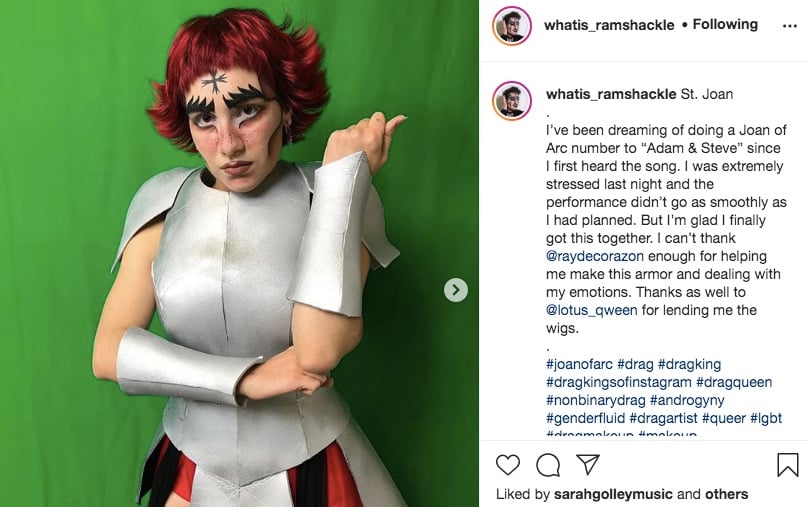 For Ram Shackle, 25, a drag career grew out of a childhood surrounded by dance and theater. Raised in East Hartford, Ram Shackle was raised by a mom who was active in the city’s dance and artistic scene, meaning that “I was always kind of aware of drag,” even before he knew the proper name for it. By high school, he had become a theater kid, more interested in the technical side of the field than his classmates in the drama department.
For Ram Shackle, 25, a drag career grew out of a childhood surrounded by dance and theater. Raised in East Hartford, Ram Shackle was raised by a mom who was active in the city’s dance and artistic scene, meaning that “I was always kind of aware of drag,” even before he knew the proper name for it. By high school, he had become a theater kid, more interested in the technical side of the field than his classmates in the drama department.
When he saw Jennie Livingston’s 1990 documentary Paris Is Burning, something started to click. The genre still didn’t seem quite right: most drag kings he saw were male illusionists or male impersonators. Ram felt more androgynous.
“I didn’t know where to locate myself,” he said. “I landed on a character that is more shape-shifty and androgynous. I describe Ram as a skanky space snake.”
His own career started with a routine from Hedwig and the Angry Inch, followed by a 2018 appearance in Connecticut’s Tuck And Strut Competition. When he came onstage for the performance as Rum Tum Tugger from Cats, “the judges just didn’t get it.”
Two of them insisted that what he was doing wasn’t drag. The third, drag queen Mia E. Z’Lay, said she wanted to see more. In the two years since, he has stayed with the medium to increase visibility and bring attention to the artistry. It’s a choice with which he also credits fellow king and real-life partner Ray Decorazón.
“I think there’s more visibility now,” he said, crediting it both to the rise of Instagram and Landon Cider’s victory on The Boulet Brothers' Dragula series. “I do wish there were more kings. If people wish that there were more kings, they need to also book the kings that are already here.”
During COVID-19, he’s directed most of his energy to helping Ray Decorazón with Chez Queen, of which Decorazón was the season three winner.
Decorazón, 22, grew up in Connecticut and started drag as a junior at Ithaca College, where the drag scene is vast and vibrant. A self-described “real socially anxious” person, he initially saw it as a way to find community. In addition to that—which came in droves—he found magic.
“I’d been living like these other people and this was something that was purely mine,” he said. “I was so quiet and reserved before I started. Getting up and doing this wild thing was not something that people would think I would do. I liked that I was pushing myself. It felt easier to be confident that I could do this on stage.”
Ithaca’s scene, he soon found out, was booming: he was able to book gigs with venues interested in new talent. There were a number of kings already performing, which meant that he didn’t have to explain himself. The name, a nod to the Spanish for “King of Hearts,” is a nod to his own demi-sexuality.
Back in Connecticut he found a very different drag landscape. There were virtually no kings: neither Ram Shackle nor Hal 6000 had yet appeared on the scene. He came to love the Chez Est, for its open stages.
“I could try new things and I wasn’t paid to be any certain character,” he said. “I’ve done a lot of sexy numbers. It gave me a space to try something real goofy. It felt like a space where people weren’t going to judge.”
It led to bookings—and to a surprise expectation that landed squarely on his shoulders. Suddenly, “I felt like there was this pressure to represent drag kings, which is impossible to do, because we’re so many different things,” he said.
Now, he brings that kaleidoscopic approach to his own routine, and to his support of other drag kings in the state and the region. By putting himself out there, he hopes that he has inspired other kings to do the same.
COVID-19, meanwhile, has marked a surprisingly transformational period for him. Before the pandemic, Decorazón was getting bookings, but producing numbers he wasn’t completely satisfied with. When the state effectively shut down overnight, it gave him time to recalibrate. He isn’t a fan of digital performances, and put most of his energy toward Chez Queen All-Stars. Ram Shackle helped him snag the crown in August.
“I don’t want drag to be a career,” he said before taking the All Stars title. “I don’t want to do it full time, I want it to be something that I’m excited about.”
Decorazón also performs as the drag queen Rayna Shyne. She is @raynashyne on Instagram.
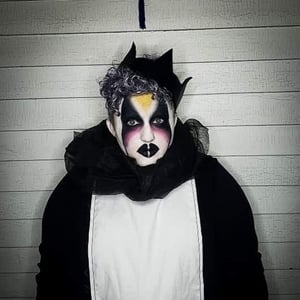
Loo D'Flyest Priestly, 34, started drag in 2012. At the time, he was working at Divas, a gay nightclub in Northampton, Mass. After watching other drag artists perform, he asked his boss if he could take the stage. She gave him a night off to do it.
In some ways, he was made for the medium. Priestly grew up around artists and theater kids in Amherst, Mass. His mom was a Patsy Cline impersonator and his dad was a clown. He was painting other kids’ faces at birthday parties by the time he was seven. As a young adult, he was a member of The 2050 Project, a social justice theater initiative that gets its name from the projection that by 2050, people of color will outnumber white people in the U.S..
By the time he was working in Northampton, “I guess I’d always kind of known about drag,” he said. Once he started performing, something clicked.
“I liked the idea of playing with gender,” he said. “As I kind of developed my character more, I started to play with gender a lot. I always say that Loo is just a glittery sparkly human who likes to entertain, make people laugh, corrupt your memories of childhood icons.”
The character is a composite of some of Priestly’s favorite influences, from sketch comedy on Saturday Night Live to comedian Will Ferrell to musicians Freddy Mercury and Prince. As bars closed, Priestly could feel a loss that went beyond the performance. There was no gathering, no impromptu tipping (Venmo for digital performances is not close to the same, he pointed out), no new friendships that came out of the night.
While Priestly likes the breadth of virtual performances—one show might now include kings and queens from multiple states and time zones—he’s less onboard with the medium.
“Loo gives me the spark,” he said. “So losing that social aspect was tough. But also, losing the outlet of art. There’s such a difference between recording and performing online than doing an audience.”
Leo Crayz, 30, began their drag career in 2012 after watching Loo perform (the two are married to each other in real life and expecting a baby in March of next year). From early on, they were focused more on burlesque, and the moments in which drag and burlesque could fuse and create magical, embodied storytelling onstage. Most of their work has unfolded in Massachusetts and Rhode Island.
A former musician and self-described “band dork,” they perform as both a non-binary king and the non-binary burlesque performer Mz. Chocolat Swirl. As Leo, they tap into the wacky, the wonderful, and the transportive, pulling from a range of influences that include Prince, Steve Urkel, and Jack Nicholson as the Joker from Tim Burton’s 1989 Batman.
The name came to them one afternoon years ago, while listening to Leona Lewis’ “Bleeding Love” in the car. Crayz recalled thinking, jokingly, “that Leona, she cray cray!” as Lewis wailed her way through the song, hitting every high note. The name stuck. Years later, Leo joked that they couldn’t change it even if they wanted to.
During the COVID-19 pandemic, they have worked on virtual performances, including videos edited and mastered by Loo D'Flyest Priestly (“we make a pretty gnarly team,” they said). Outside of drag and burlesque, they’ve only recently returned to their “muggle gig” as a massage therapist.
In eight years, they have also become a fierce champion of representation, in a medium where booking and performance can remain disproportionately white. In a recent interview, they recalled their time performing in band, when they were sometimes pushed away from the spotlight for reasons that had nothing to do with talent.
“I wasn’t the front line, but I know that I could be and should be,” they said. “It’s beautiful to see some of the folks in the community, to showcase that you can be a beautiful POC person to the front.”
Now, they fight for both themselves and other Black and Brown performers in the medium. They recalled several conversations with Hartford-based queen Xiomarie LaBeija, in which the two acknowledged how far both the regional drag scene and the medium had to go.
“Sometimes I think that I’m not being taken seriously,” they said, noting that they stand with drag artists who have refused to perform in shows where they are one of one or two performers of color. “People should not be snoozing over any of us.”
To read the most recent issue of Centerline, click here.


